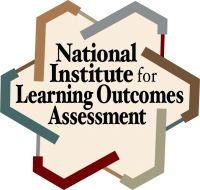Description
This assignment is used for a sophomore (200 level) Communication Studies General Education course. As a General Education course, the vast majority of undergrads are required to take this course. The course is designed as a hybrid course taught as a lecture (200 students per section) once a week with two lab sections (20 students) each week. The major assignments include: two speeches and the student’s choice of one of four writing assignments all designed like this assignment, just differing subjects. The assignment requires students to choose an organization in which to conduct an organizational cultural analysis.
The DQP proficiencies are: communication fluency, analytic inquiry, and applied & collaborative learning. These proficiencies are assessed by each lab instructor (MA level Graduate Teaching Assistants) using the attached rubric while evaluating how well each student is able to describe and illustrate the organizational culture of the organization or group that they choose. In doing so, they apply Schien’s theory of organizational culture and describe the three levels. Schien’s theory of organizational culture is covered in lecture prior to the assignment as well as in a book chapter on organizational communication.
Alignment and Scaffolding
This is an introductory college level course in communication studies. Students attend an interactive lecture on organizational communication (approximately 15 to 20 minutes is dedicated to organizational culture and Schien’s theory of organizational culture). In addition, two labs are dedicated to organizational communication and the majority of one lab to organizational culture, specifically Schien’s three levels. The same process is followed for three other written assignments (culture, interpersonal relationships, and conflict). The student chooses one of four papers to complete the course’s written communication requirement.
Reflections
The assignment connects best with students who have experience with paid employment or lengthy volunteer work. Students that lack “real world” experience occasionally struggle, but the interview portion of this assignment helps them work through organizational culture. This assignment has been revised as some students were weak on connecting the theory with their observational experiences. Upon reflection, I believe this was due to my use of “storytelling” when discussing the assignment. Some students would submit papers that were more story like than analytical. Therefore, I removed story and references to telling a story from the assignment and the rubric. Since making that change, student submissions are more linear and analytical. I especially like the analytic application of theory in this assignment and believe it helps students work through the theory and apply theory to their organizational experiences.

